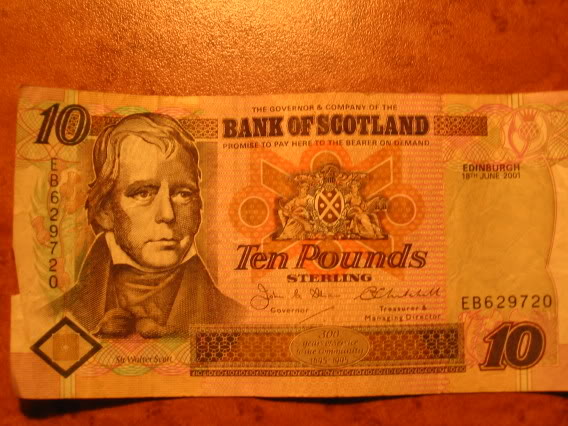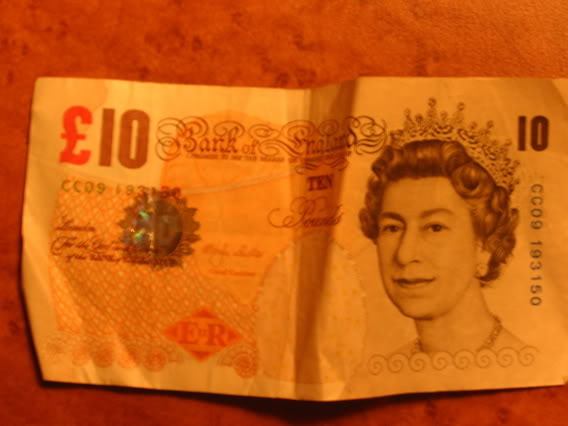18 marca
2010
|
The Scots have a colorful (and tragic) history of fighting the domination of the English that ended, more or less, with the butchery that was the Battle of Culloden (16 April 1746), in which tired, hungry, and somewhat unenthusiastic Scotsmen armed with swords, at best, took on England's best, armed with bayonet-fixed firearms. So it was with some surprise that upon giving a 20 pound note with the likeness of the Queen on it to a cashier for my first purchase in Glasgow's Central train station (a local map book), the 10 pound note I got as change looked like this:

When the typical 10 pound note I see in London looks like this:

It would be as if the Federal Reserve Bank in St. Louis began issuing a five-dollar bill with a likeness of Sterling Price rather than Abraham Lincoln.
Now, if I understand it correctly, the Scots have their own Parliament (and yet send members to the British Parliament in London, while the English have no separate Parliament of their own). The Scots also run their National Health Service, their rails, and many other aspects of their domestic governance, get to issue distinctive currency, and yet don't raise an army. It's not quite a federal system, in that not every country within the United Kingdom has separate representation at different levels akin to Congress and state legislatures in the United States. It sure looks an awful lot like independence to me.
|